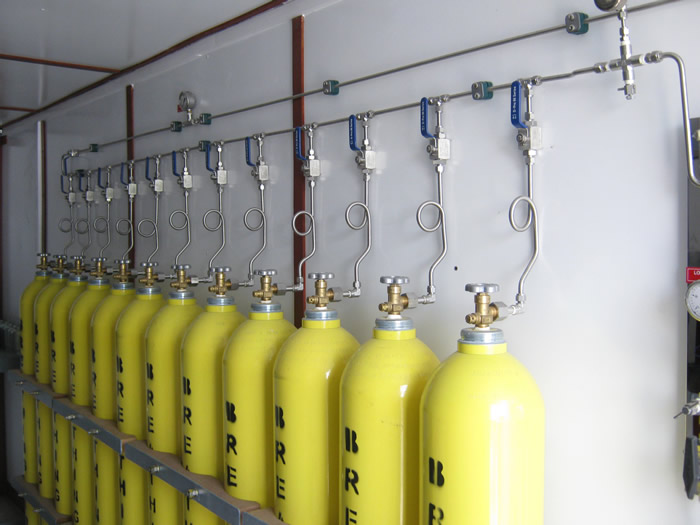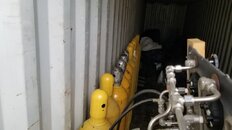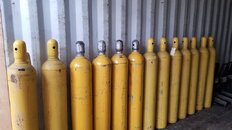You are using an out of date browser. It may not display this or other websites correctly.
You should upgrade or use an alternative browser.
You should upgrade or use an alternative browser.
Setting Up Cascade
- Thread starter rob.mwpropane
- Start date
Please register or login
Welcome to ScubaBoard, the world's largest scuba diving community. Registration is not required to read the forums, but we encourage you to join. Joining has its benefits and enables you to participate in the discussions.
Benefits of registering include
- Ability to post and comment on topics and discussions.
- A Free photo gallery to share your dive photos with the world.
- You can make this box go away
Gone for diving
Contributor
It really never ends
Find a good deal, = need a bigger (dive) shop,
Looks good, hope to see pictures eventually
Find a good deal, = need a bigger (dive) shop,
Looks good, hope to see pictures eventually
@rob.mwpropane ,
When I was considering purchasing a small continuous-duty compressor and setting up a small cascade system, my friend here (the owner of my LDS) cautioned me that I need to be able to run the compressor often enough, and long enough each time, to keep the compressor healthy. I did some calculations based on the recreational profiles I expected to be doing, and concluded that with more than a couple of cascade bottles, I probably wouldn't be able to run my compressor enough.
I don't know if you have considered this...
rx7diver
When I was considering purchasing a small continuous-duty compressor and setting up a small cascade system, my friend here (the owner of my LDS) cautioned me that I need to be able to run the compressor often enough, and long enough each time, to keep the compressor healthy. I did some calculations based on the recreational profiles I expected to be doing, and concluded that with more than a couple of cascade bottles, I probably wouldn't be able to run my compressor enough.
I don't know if you have considered this...
rx7diver
Gone for diving
Contributor
Question
So what are the numbers that are the min for running vs sitting, etc.
Sure compressor should run long enough so water doesn't build up in the oil and has time to boil off,
what else?
Even if you ran it once a month should be no big deal,
If you can't manage that get a dive buddy that's double the fills,
So what are the numbers that are the min for running vs sitting, etc.
Sure compressor should run long enough so water doesn't build up in the oil and has time to boil off,
what else?
Even if you ran it once a month should be no big deal,
If you can't manage that get a dive buddy that's double the fills,
That's a valid point and one that I've thought about. I'm not sure how many bottles I plan on keeping. The picture doesnt even include the 4 6000psi bottles I got from before. I just want to set something up and play around, see what works, and sell the rest. If it was just me as a diver, banks wouldn't make a lot of sense, but we have a total of 7 divers in the family. My last fill "session" took me a little over 3 hrs. I figure with the bank I can run the compressor a few times a week and store air for when needed. I won't mind doing 30 min a day... beats 3.5hrs in one stretch.@rob.mwpropane ,
When I was considering purchasing a small continuous-duty compressor and setting up a small cascade system, my friend here (the owner of my LDS) cautioned me that I need to be able to run the compressor often enough, and long enough each time, to keep the compressor healthy. I did some calculations based on the recreational profiles I expected to be doing, and concluded that with more than a couple of cascade bottles, I probably wouldn't be able to run my compressor enough.
I don't know if you have considered this...
rx7diver
My Rix is oiless. The Yanmar engine should see some action periodically, and I make it a point to run it at least once every few weeks even if it's not connected, even if just for a few minutes.Question
So what are the numbers that are the min for running vs sitting, etc.
Sure compressor should run long enough so water doesn't build up in the oil and has time to boil off,
what else?
Even if you ran it once a month should be no big deal,
It's pretty crazy to think I have just as many bank bottles now as I do scuba tanks....17. The system also came with an ok panel. Not the prettiest, but it'll work.
Julius SCHMIDT
Contributor
Rally together and lets all start up our compressors and run them for a day to give them a healthier life
My setup:Thoughts? What's your process for filling bank bottles?
Two banks are connected to the compressor, each with a one-way valve.
The first bank (6x 50 liters) is 330bar. The second bank (6x 50 liters) is 232 bar and has a pressure reducer just before the bank.
Each of those two lines has a digital pressure sensor and a NC solenoid valve.
Behind the solenoid valve, both lines come together, go through a needle valve and to the fill-whip. Another digital pressure sensor is installed just before the fill-whip.
A tiny computer (Raspberry-Pi) measures the 3 pressures. It has a display which shows 3 options: 207 / 232 / 300 bar.
Three buttons next to the displayed values are for selecting the pressure.
Once the tank is connected and fully opened, the computer knows the tank pressure and each bank pressure.
After a selection button has been pressed, it opens the first solenoid and the tank is filled until the pressure difference becomes less than 5 bar.
The 1st solenoid is then closed and the 2nd solenoid is opened, filling the tank further to the selected pressure.
The needle valve limits the filling speed and maintains a pressure difference so the computer can measure the pressures on both sides. Depending on how fast the tank is filled, it will warm up and has a lower pressure after cooling down. So the 207bar selection fills the tank up to 215bar, the 232 selection fills up to 245 and the end result is pretty close to the desired value.
Advantages:
-no need to keep an eye on the pressure during a fill, no chance of over-filling an aluminum tank.
-no valves needed when the compressor fills the banks
-the solenoids are more reliable than valves (no leaks after 2 years now)
-banks are used for cascade filling, it is possible to create more bank-groups by adding a pressure sensor and a solenoid per group, and a software addition in the computer.
The one-way valves I used are for hydraulics, and these don't seal when used with gas. O-rings are squashed within weeks, so a friend created teflon seats for these valves. 100% sealing, no issues in over a year now.
Julius SCHMIDT
Contributor
Wow my brain is burning I'm almost speechless
Dammit why couldn't you be closer, lol. I need more friends smarter than me to keep me on my toes!My setup:
Two banks are connected to the compressor, each with a one-way valve.
The first bank (6x 50 liters) is 330bar. The second bank (6x 50 liters) is 232 bar and has a pressure reducer just before the bank.
Each of those two lines has a digital pressure sensor and a NC solenoid valve.
Behind the solenoid valve, both lines come together, go through a needle valve and to the fill-whip. Another digital pressure sensor is installed just before the fill-whip.
A tiny computer (Raspberry-Pi) measures the 3 pressures. It has a display which shows 3 options: 207 / 232 / 300 bar.
Three buttons next to the displayed values are for selecting the pressure.
Once the tank is connected and fully opened, the computer knows the tank pressure and each bank pressure.
After a selection button has been pressed, it opens the first solenoid and the tank is filled until the pressure difference becomes less than 5 bar.
The 1st solenoid is then closed and the 2nd solenoid is opened, filling the tank further to the selected pressure.
The needle valve limits the filling speed and maintains a pressure difference so the computer can measure the pressures on both sides. Depending on how fast the tank is filled, it will warm up and has a lower pressure after cooling down. So the 207bar selection fills the tank up to 215bar, the 232 selection fills up to 245 and the end result is pretty close to the desired value.
Advantages:
-no need to keep an eye on the pressure during a fill, no chance of over-filling an aluminum tank.
-no valves needed when the compressor fills the banks
-the solenoids are more reliable than valves (no leaks after 2 years now)
-banks are used for cascade filling, it is possible to create more bank-groups by adding a pressure sensor and a solenoid per group, and a software addition in the computer.
The one-way valves I used are for hydraulics, and these don't seal when used with gas. O-rings are squashed within weeks, so a friend created teflon seats for thesyggve valves. 100% sealing, no issues in over a year now.
Do you have any pictures or a parts list? I have messed with RP before. They're pretty awesome. I'm trying to figure out a way to add solenoids to the coalescers for less than commercial prices, I just need to add them to a timer. I would like to be able to walk away from my compressor for an hr or 2.
As far as filling from the banks I have a few pressure regulators. I can turn the pressure down and walk away and let them fill slowly without exceeding whatever set pressure is.
Can anyone link / give me a quick rundown of flexible hose vs ss tubing and compression fittings? I believe I have the right tool, and I "think" it would be cheaper than getting a bunch of hoses made up. Thoughts? I know it would be more time consuming to setup, but I'm used to furling. I don't think I would need the valves, I'll just use the valves on the tanks. If I could find inexpensive valves I might do it, but they get pricey fast.
Does anyone know offhand the reason to install "loops" in the tubing?
Something like this;

Does anyone know offhand the reason to install "loops" in the tubing?
Something like this;

Similar threads
- Replies
- 22
- Views
- 3,221
- Replies
- 77
- Views
- 5,521
- Replies
- 19
- Views
- 1,908
- Replies
- 0
- Views
- 141





